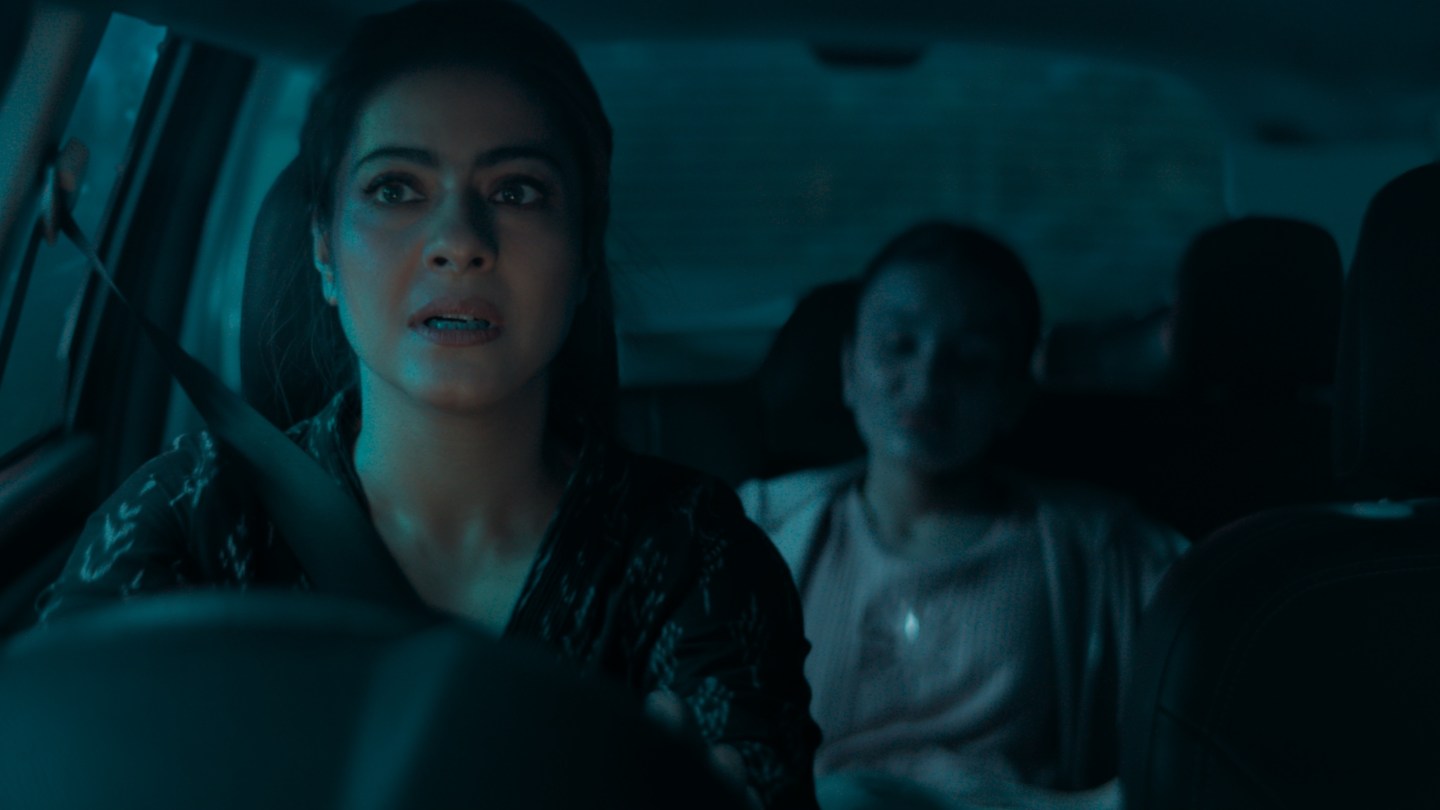The biggest pleasure in Maa (Mother) is watching Kajol kick ass.
While the actor has spent over three decades playing everything from the girl every boy wanted to take home to mother (as Simran in Diwale Dulhania Le Jayenge) to a straight-up unhinged villain (as Isha in Gupt), we’ve rarely seen her in action mode.
Maa
The Bottom Line
More interesting in theory than in execution.
Cast: Kajol, Ronit Roy, Indraneil Sengupta
Director: Vishal Furia
Screenwriter: Saiwyn Quadras
2 hours 15 minutes
Here, she becomes the savior mom — think Liam Neeson in Taken, except that since Maa is billed as mythological horror, the saving is done in a creepy hamlet near Kolkata, India, called Chandanpur. When a demon called Doito comes after her 12-year-old daughter Shweta (Kherin Sharma), Kajol’s Ambika transforms into fire and brimstone.
Maa is the second entry in the shared universe that began with 2024’s Shaitaan, at the end of which Kabir (Ajay Devgn, a producer on Maa) comments, “If you want to understand the real meaning of strength, watch a mother fight for her child. In the entire universe, there is no stronger god than a mother.” Perhaps this is the line that inspired this spinoff. But although Kajol is solid as the divine feminine (whose name, Ambika, is another name for the goddess Durga), I just wish the film had more of her fury.
The movie is directed by Vishal Furia and written by Saiwyn Quadras, and while horror is very much in Furia’s wheelhouse (his previous credits include Chhorii and its sequel), it represents a departure for Quadras, known for such biopics as Neerja and Mary Kom. Here, Quadras offers a spin on the tale of Kali Maa and Raktbeej, the powerful demon who can replicate himself from every drop of his blood that spills on the ground. The idea of reworking such a fascinating religious myth into modern-day horror sounds intriguing on paper. But it proves not so much in execution.
Horror films are not about logic, so we can’t ask questions like why Ambika takes Shweta to Chandanpur when she knows its dangerous history, or why she stays there despite all the strange things going on. Characters in these movies never seem to leave the haunted place when they should. But we suspend disbelief and accept it as part of the deal. What’s harder to make peace here with are the lack of scares and the sluggish pace.
Shaitaan was anchored by a solid storyline, with a stranger coming home and taking possession of a young girl. It also featured a delicious performance by R. Madhavan as the titular devil, his perverse delight in torturing the girl and her parents becoming its own entertainment.
The gaping hole in Maa is the feeble antagonist. Despite the VFX and the background score, Doito doesn’t have an inch of menace about him. In fact, I kept thinking this tree-like creature, with snaking branches that he puts to murderous use, was basically an overgrown and angry version of Groot from the Guardians of the Galaxy movies. There is very little personality here, and he’s saddled with forgettable dialogue, as in a scene when he tells a man, “Your heart is black. You could be useful to me.”
The story is both slow and convoluted — there is human sacrifice, Kali Puja, a Rajbari (mansion) with 30 rooms. (Incidentally, if you want to see a far better use of big Bengali mansions in a horror film, check out Anvitaa Dutt’s Bulbbul.) Maa also has echoes of Rosemary’s Baby, with feminist undercurrents that might remind you of the Stree franchise, and frames in the climax that closely resemble moments from Shaitaan. And although Furia put sugarcane fields to great use in Chorii, here, the forest is too fake to evoke fear.
There are a few fun jump scares — but little that chills or thrills.
